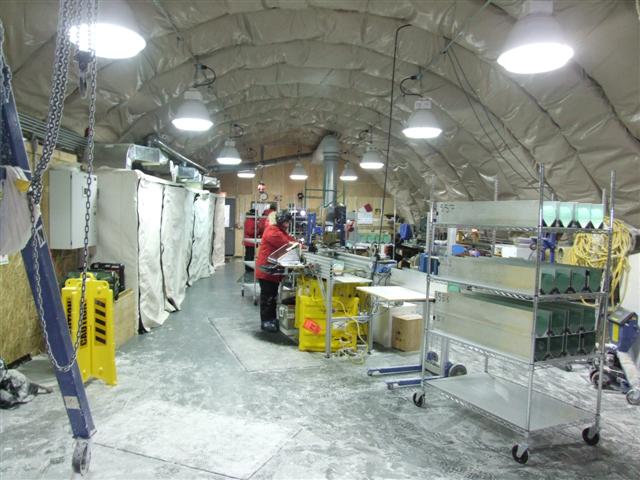Global phenomenonWAIS ice core reveals connection to Little Ice Age in Northern HemispherePosted June 29, 2012
The Little Ice Age that cooled off Europe for more than four centuries was a global phenomenon, suggest researchers who measured temperature from an ice-core borehole drilled into the West Antarctic Ice Sheet. They published their findings in the journal Geophysical Research Letters published last month. An analysis by researchers at the University of California, San Diego’s Scripps Institution of Oceanography The period roughly between 1400 and 1850 was marked by an average temperature drop of just less than 1 degree Celsius, based on ice core data from Greenland. Scripps graduate student Anais Orsi and colleagues found evidence of the same cooling trend in the temperature profile of an ice-core borehole in West Antarctica, where scientists have drilled down 3,405 meters as part of the WAIS Divide Ice Core project. [See previous article — The last core: WAIS Divide deepens borehole for research into climate change.] Results show that WAIS Divide was colder than the last 1,000-year average from 1300 to 1800. The temperature in the time period 1400-1800 was on average about .5 degrees Celsius colder than the last 100-year average. “This result is consistent with the idea that the LIA was a global event, probably caused by a change in solar and volcanic forcing, and was not simply a seesaw-type redistribution of heat between the hemispheres, as would be predicted by some ocean-circulation hypotheses,” concluded Orsi and Scripps co-authors oceanographer Bruce Cornuelle Orsi analyzed data from a 300-meter borehole in West Antarctica that contained ice formed in the last millennium. The WAIS Divide project completed drilling an ice core to near the bedrock during the 2011-12 field season, a paleoclimate record that dates back at least 62,000 years. The ice is a good insulator, and does not adjust its temperature very quickly. Down deep in the ice sheet, the ice still retains information about the temperature at the time when the snow fell. That enabled Orsi to take direct temperature readings in the hole left over by the drilling project, and create a record of hundreds of years of climate. “The difference in the magnitude of the LIA between Greenland and West Antarctica suggests that the feedbacks amplifying the radiative forcing may not operate in the same way in both regions,” the authors said. |



For USAP Participants |
For The Public |
For Researchers and EducatorsContact UsU.S. National Science FoundationOffice of Polar Programs Geosciences Directorate 2415 Eisenhower Avenue, Suite W7100 Alexandria, VA 22314 Sign up for the NSF Office of Polar Programs newsletter and events. Feedback Form |


